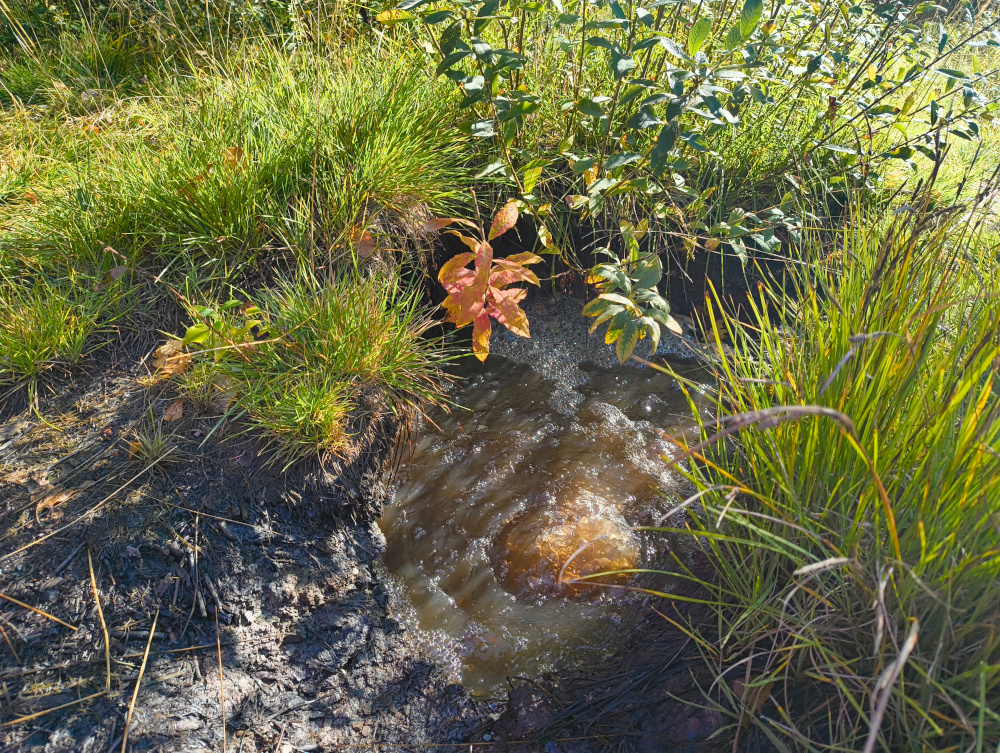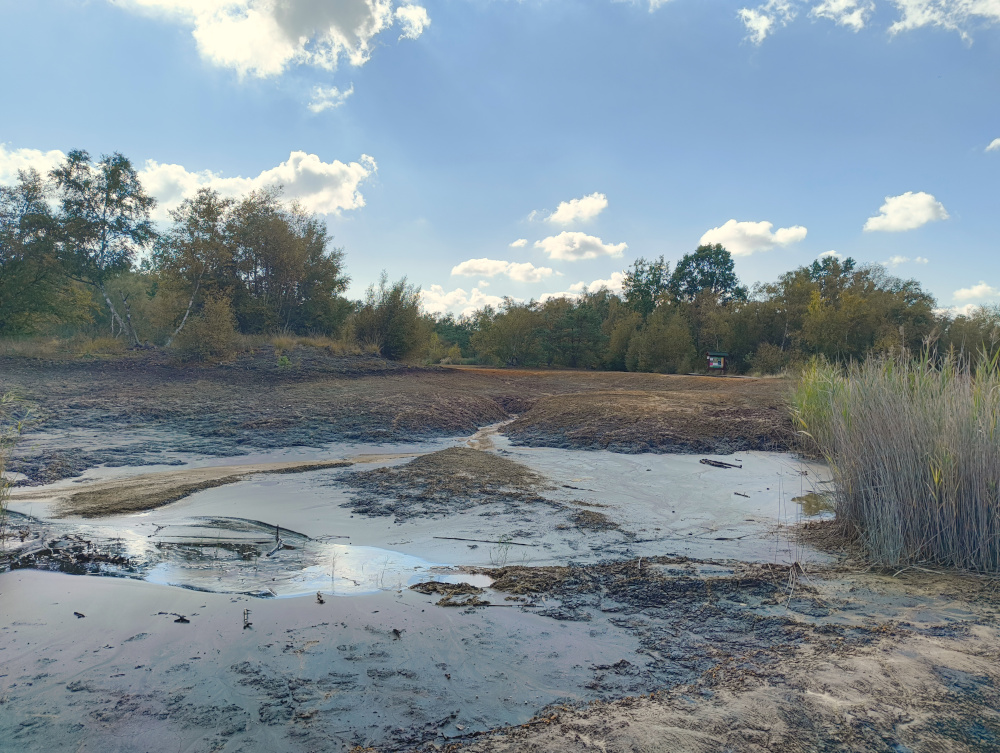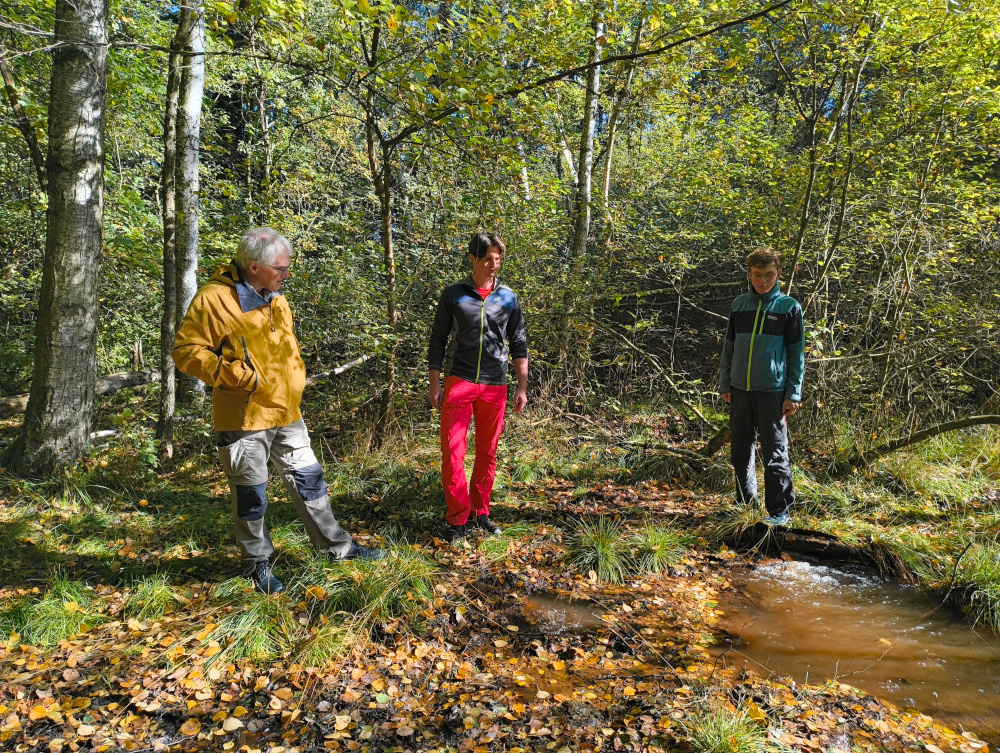Western Bohemia is known for its spa towns with hot springs. However, few people know that the local mineral waters originate from the Earth's volcanic past. Not only hot water rises from the depths of the Earth's crust along tectonic faults, but also volcanic gases – a remnant of ancient geological activity and proof that the area is still active. Gas emissions passing through the water, known as wet mofettes, are easily recognizable by their bubbling pools. In addition to these, there are also dry mofettes – bowl-shaped areas of bare, lifeless clay where dead insects or vertebrates are often found. In these places, carbon dioxide is released directly from the ground, with a concentration of up to 99.9%. In addition to CO₂, hydrogen sulfide is also released from the ground, so you can also recognize mofettes by their unpleasant smell.

Scientists from the Faculty of Science of Charles University have been monitoring gas emissions for a long time. They are interested in the connection between the amount of gases released and the earthquake swarms that occasionally occur in the area. There are approximately 20 seismic stations in the vicinity of Cheb, where seismic activity is continuously measured. Earthquake swarms, i.e., series of minor tremors, occurred here in 2008, 2011, 2014, and 2021, and were usually followed by increased production of volcanic gases. However, a direct link between these two phenomena has not yet been reliably proven.
Second-year geology students who took part in an excursion to mofette fields at the end of September, accompanied by Professor Tomáš Fischer, visited the site near Hartoušov, the Bublák mofette near Milhostov, and the SOOS National Nature Reserve. They had the opportunity to see a seismic station, monitoring wells, and the geophysical museum in Skalná.

The upcoming generation of geoscience students is the hope for the emerging geoenergy industry, where there is a severe shortage of experts. We were therefore interested in what brought young people to study geology and what they know about geothermal energy.
Klára, a second-year geology student at Charles University's Faculty of Science, told us that she chose this field because of her love of mountains. "As a child, I collected stones and was interested in their origin. This summer, I took part in the excursion to Sweden, where ore mining is well developed and geologists are in high demand. I don't know what the situation is like in the Czech Republic," adds Klára. She plans to study deposit geology or geophysics as her future specialisation. So far, she is satisfied with both the course of her studies and the individual approach of most of her teachers. She does not know much about geothermal energy yet.
Klára's classmate Ondřej, who studies geology and political science, has taken an interesting approach. He is particularly attracted by the overlap between these fields, public administration and environmental policy. He has only a superficial understanding of geothermal energy and its use, but during this semester he will learn more about it in a facultative course he has chosen as part of his studies at the Faculty of Science. Like Klára, he was interested in nature and wanted to explore its secrets.
Geoscience disciplines have a great future and offer a wide range of applications. Experts will be needed especially in the emerging geothermal sector, which has been on the rise in recent years not only in the Czech Republic but also worldwide. It is necessary to disseminate this information among high school students so that they are motivated to study these interesting but demanding fields. We hope that the excursions organized at the RINGEN research center in Litoměřice and lectures on the SYNERGYS project, organized not only for high schools, will contribute to the promotion of the geothermal sector.







